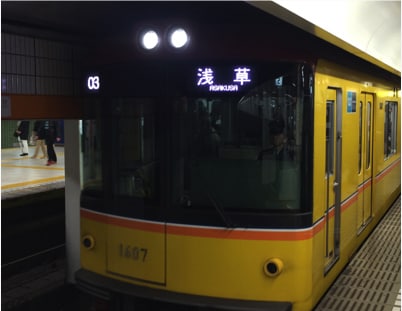
- Semiconductor Technology Now
Expert Interview
Broad applications: from home appliances to railroad
Telescope Magazine: What kinds of equipment and systems use SiC power devices?
Tsunenobu Kimoto: During the 15 years since commercialization, SiC diodes have come to be used widely in such equipment as power conditioners for solar generators, air conditioners, and power supply units of high-end computers (Figure 3).
| SiC diodes introduced in power supply units for high-performance computers | Reduced power supply unit (to about 1/2) | |
| SiC diodes introduced in consumer-use air conditioners | Reduced inverter switching losses by 60% | |
| SiC diodes introduced in subway cars for Tokyo Metro Ginza line | Reduced power losses by 30% | |
| SiC transistors introduced in railcars for Odakyu and JR Yamanote lines | Reduced power losses by 35% | |
| SiC transistors introduced in hybrid cars | Improved fuel efficiency by over 10% |
Tsunenobu Kimoto: In 2013, subway operator Tokyo Metro adopted SiC diodes for the power circuit of the new 1000 series cars serving the Ginza line (Figure 4). The new power circuit consists of diodes and transistors, of which only the diodes are based on the SiC technology. With the introduction of the power loss-reducing SiC diodes, the energy recovered from the railcars' regenerative brakes (i.e., a system that converts kinetic energy of braking into usable electricity) also increased, leading to a 30% energy saving overall.
Admittedly, the Ginza line's example is an outlier. The line has no connection with other systems' lines, and so its trolley voltage was kept exceptionally low at 600 V DC, which meant the breakdown voltage of the power device did not have to be higher than 1,700 V. With other railway systems, in contrast, the standard trolley voltage is 1,500 V DC, which requires power devices to withstand a voltage of 3,300 V. To extend the use of SiC devices to other railway systems, the breakdown voltage of the devices had to be much higher.
 |
The good news is that Mitsubishi Electric has already solved this problem. Railcars with Mitsubishi's new SiC devices have been tested on the Odakyu line and the JR Yamanote line since 2014. Both the diodes and transistors are SiC-based, and a 38% improvement in energy efficiency has been achieved. Odakyu plans to put the cars in service in spring 2015, followed by JR in fall. Now that SiC devices are beginning to be applied to more than just a few lines, the next target is the Shinkansen high speed train that runs on a trolley voltage of 25,000 V AC.
Telescope Magazine: How do you think SiC-based power devices will evolve?
Tsunenobu Kimoto: Going forward, the focus will be on developing technologies for expanding applications of SiC devices. Cost reduction technologies will be especially important. The evolution of SiC devices as industrial products has only just begun, as has the exploration of their applications.
The application of SiC devices to railroad systems is symbolic of how far the technology has advanced. From a business viewpoint, however, its impact is less significant. There are only so many railcars out there, after all, and that is not enough to support an entire segment of the semiconductor device business. That is why many SiC device manufacturers are looking out for applications that require larger numbers of devices. For example, Mitsubishi Electric is applying the devices to elevators, and Rohm is focusing on motor drivers for industrial equipment. Applications for automobiles are being developed by many firms including a consortium of Toyota and Denso. The market for SiC devices is certain to grow rapidly in the next five years or so.



















